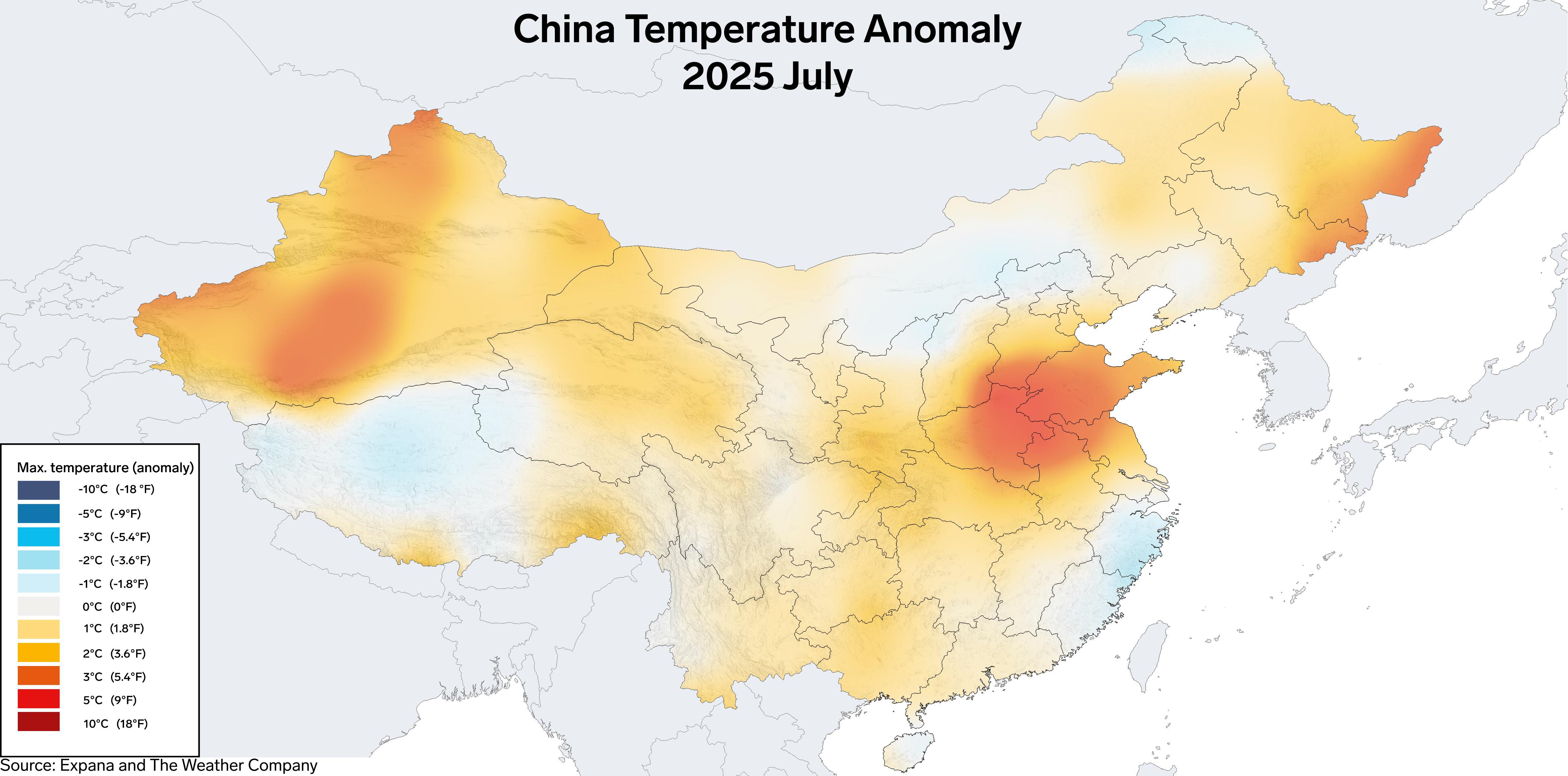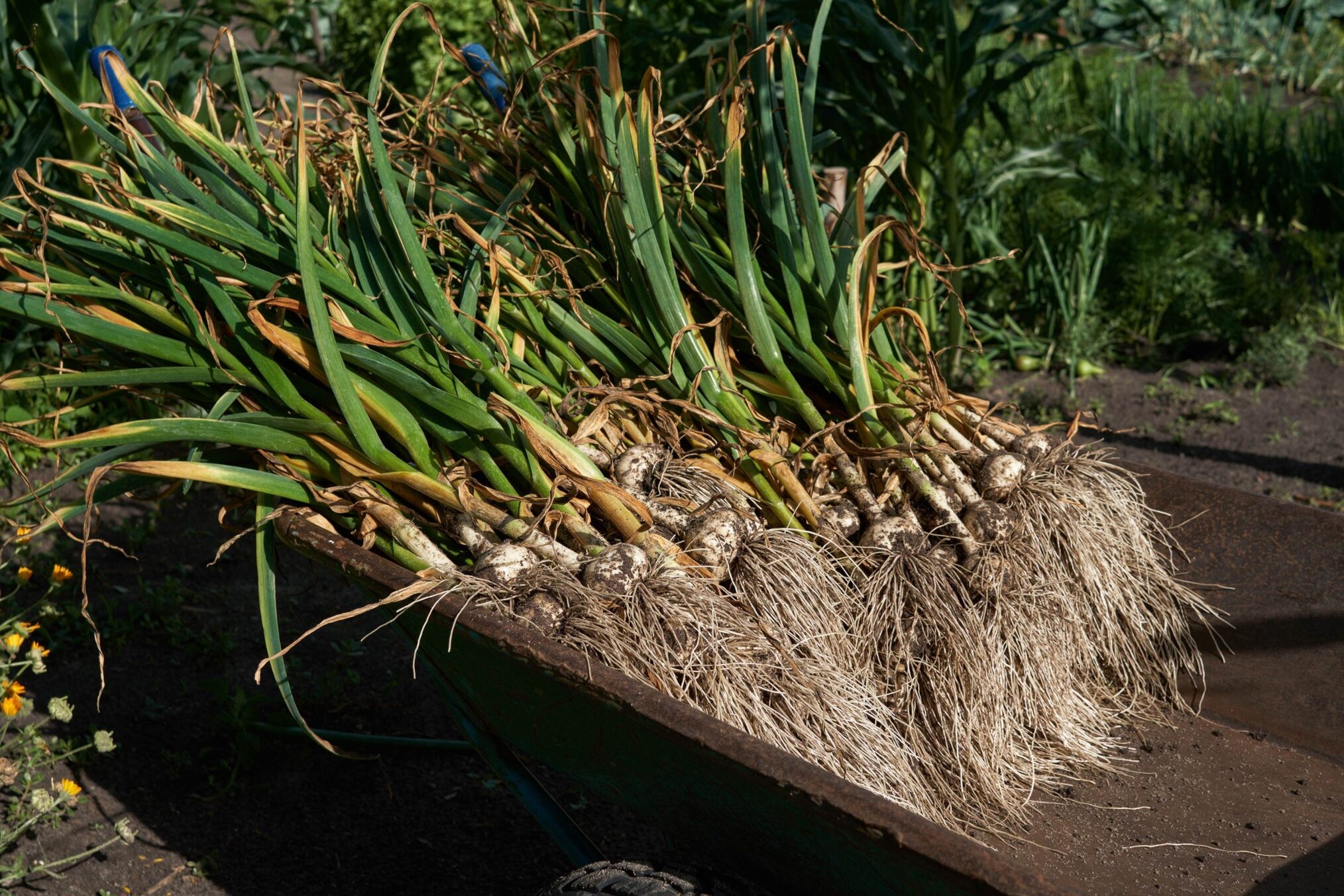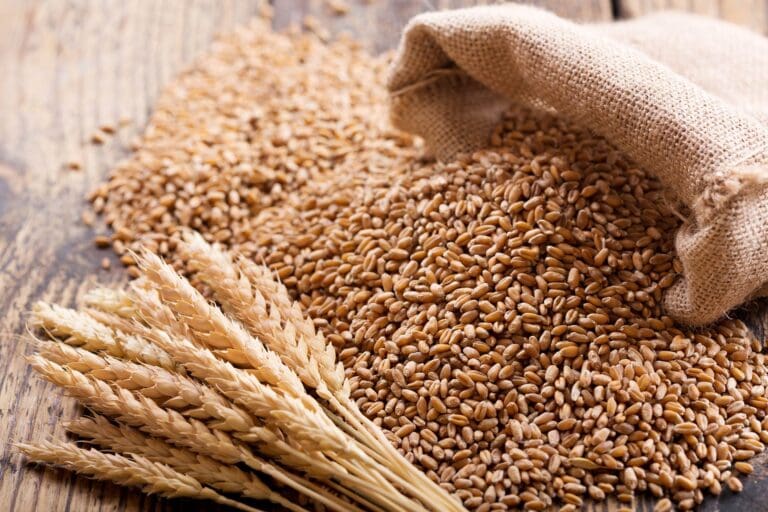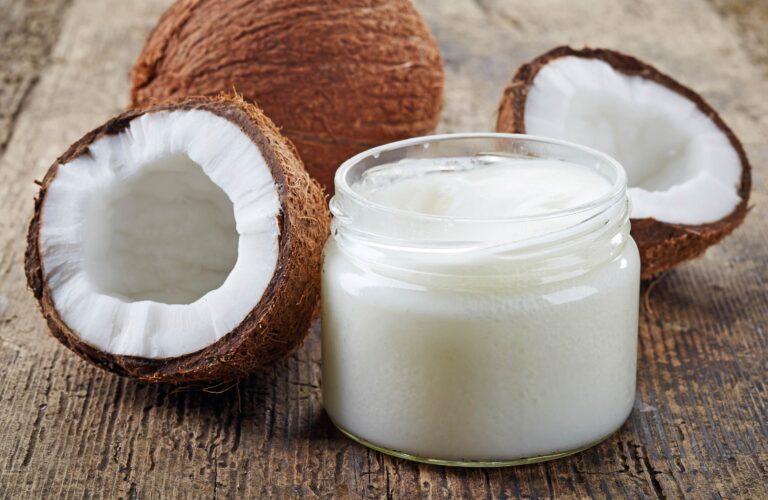According to the Expana Global Weather Report – July 2025 (Customer access only), parts of China, including Xinjiang and Shandong provinces, experienced temperatures 3-4°C above average last month, threatening the cotton, garlic, paprika peppers, pomegranates, and corn production sectors.

Figure 1. China’s 2025 July maximum temperature anomaly from the 30-year average.
Xinjiang, China’s leading cotton-producing region responsible for around 90% of national output, endured severe heat coupled with up to 85% less rainfall than usual. These conditions are expected to induce cotton bud shedding during development and amplify vulnerability to pest infestations, which could significantly reduce overall yields.
Paprika peppers and pomegranates, also grown extensively in Xinjiang and Shandong, face early developmental challenges from the heatwave. Elevated temperatures have reportedly caused flower drop, potentially limiting fruit set and diminishing crop yields.
Similarly, garlic, a major export crop originating largely from Shandong (which supplies about 80% of global garlic exports), faced high temperatures during harvest season. Early season rains had already compromised quality through increased disease pressure, and the recent heat raised fears of rotting under humid conditions. Moreover, recent US tariffs have shifted some Chinese garlic exports towards Europe, intensifying the stakes, said the report.
The approaching corn harvest also saw elevated temperatures which could reduce grain filling rates, adversely affecting yields. Nevertheless, the USDA projects that China’s overall corn production will be slightly up from last year and 6% above the five-year average, suggesting some resilience despite weather-related challenges.
“There does not seem to be major concern in the market for Chinese corn yields and prospects are mostly optimistic. Dryness could support harvesting pace provided that heat stress had not impacted the crop during key maturation stages,” commented Ben Barritt, Grains Market Reporter.
“Sources said if Chinese production concludes at a lower-than-expected figure, it could prompt increased demand for South American corn, as it is very unlikely a revival in trade with the US is to occur,” he added.
Image source: Getty
Written by Simon Duke




